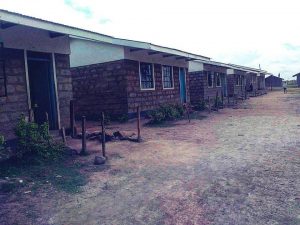When Men Find Comfort in the Land of Mice

The novella Of Mice and Men would be a fast-paced tragedy, arrival of the main characters quickly giving way to darkness, if it weren’t for how author John Steinbeck inserts long paragraphs with vivid descriptions of nature. This describing of forests, swamps, and animals tend to be the only peaceful points in the story, with every setting outside of nature plagued by distress and worry.
Steinbeck uses this method, of writing his story so that nature is almost synonymous with calm, incredibly well and, frequently, not so explicitly. One of the first scenes of the story features the two main characters, George and Lennie, lounging next to a pond as the day winds down. George begins to talk about a farm that he and Lennie will one day have, with “a big vegetable patch and a rabbit hutch and chickens,” (p.14). This dream is a recurring element of the story, with George detailing it multiple times throughout the novella and Lennie speaking about how he will get to tend the rabbits.
For Lennie, the farm is an opportunity for him to pet soft things whenever he pleases, but for George, it is something to look forward to. Typically quite angry, George calms down when he thinks of his farm (“[George’s] voice was growing warmer. ‘An’ we could have a few pigs. I could build a smoke house the one gran’pa had…’” p.57). After Candy’s dog is brought out to be shot, George eventually begins to talk about the farm, with Candy himself catching on to the idea: “We’ll fix up that little old place an’ we’ll go live there.’ […] They all sat still, all bemused by the beauty of the thing, each mind was popped into the future when this lovely thing should come about,” (p.60).
Aside from the farm, however, the nature in the character’s current environment of Soledad is a more physical source of refuge. After Lennie kills Curley’s wife, he runs to the spring where he and George first arrived. He kneels down and drinks the water, and Steinbeck sets the scene acutely differently to the chaos of the barn: “When a little bird skittered over the dry leaves behind him, his head jerked up and he strained toward the sound with eyes and ears until he saw the bird, and then he dropped his head and drank again.” (p.100)
But why did Steinbeck create an environment where the characters’ only salvation from their struggles is nature? It’s possible he was attempting to answer the question of what is man’s connection with nature. In Of Mice and Men, Steinbeck relates nature to a life without struggle, an outlet for serenity. Perhaps, nature is a way for man to detach himself from a life of hard-work with nothing to yield. Perhaps Steinbeck thought that the forests and ravines are places to go when in need of a refresh, a way to return to our roots. Regardless, it’s clear that the author instills a sense of importance to man’s unique connection with nature; despite consistently being deprived of it, nature is almost always a way for us to find salvation from the hardships of human existence.
Photo courtesy of: mtran on serendip studios.
), a (the first term), d (the common difference), or n (the term in which a certain value appears).
), n (the last term), or a (the first term).
), a (the first term), r (the common ratio), or n (the term in which a certain value appears).
.







